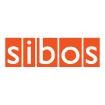The global banking industry is in the middle of one of the most significant transitions in financial messaging: the migration to the ISO 20022 format. More than simply a technical standard, ISO 20022 represents a new data-rich language for payments and securities that promises greater transparency, efficiency and interoperability across borders. With a key deadline approaching, and one that has just passed — the November 2025 end of SWIFT's coexistence period and the July 2025 migration of Fedwire in the U.S. — banks must act now to avoid operational risk and competitive disadvantage.[1], [2]
Why ISO 20022 matters
ISO 20022 is not simply a messaging format upgrade, rather, it's a global framework for financial communication that provides a multitude of enhancements and new capabilities. The richer, structured data of ISO 20022 payment messages carry more precise information on parties, remittances and compliance fields enabling better reconciliation and analytics. The standardized data also reduces ambiguity in sanctions screening, AML monitoring and fraud detection which has the benefit of improved compliance and risk monitoring. By using a common messaging language ISO 20022 improves cross-border interoperability which makes it easier to process payments across jurisdictions and reduces friction in correspondent banking.
The new messaging format also future-proofs financial institutions with the evolution of real-time and digital payments as many domestic systems, such as the U.S. FedNow instant payment service, have adopted the standard.[3]
Pending deadline looms
While ISO 20022 has been in development for years, SWIFT has actively supported the banking industry with the migration to the new format by enabling a period of coexistence, converting messages between MT (legacy SWIFT messaging format called Message Type) and ISO 20022, starting in March 2023.[4], [5] This action has enabled early adopters to benefit from ISO 20022's richer data format and get experience in its applications. It has also provided additional time for other financial institutions to transition to the message standard. However, after more than two years of a transitional period, the coexistence of the two formats is set to end on November 22, 2025, marking the beginning of a new era.[6]
Potential risks of delaying migration to ISO 20022
The consequences of delaying migration to ISO 20022 are significant. Most obvious, is the inability or significant challenge to participate in many domestic and cross-border real-time payment schemes, such as FedNow, Target2 (T2), that have already adopted the messaging standard.[7] Specifically, financial institutions that have not migrated to ISO 20022 face possible operational disruptions stemming from the inability to send or receive compliant messages, which effectively could halt cross-border payments or domestic wire transfers.
In addition, institutions relying on conversion bridges from ISO 20022 to MT (legacy SWIFT Message Type) formats risk stripping out critical data, weakening compliance and making reconciliation more difficult. Further, failure to comply with structured data requirements undermines AML and sanctions programs which can have the negative effect of increasing regulatory risk for non-compliant institutions.
Finally, delaying migration creates a competitive disadvantage. Many banks, including larger ones, such as J.P. Morgan, and smaller ones, such as Evolve Bank &Trust, have been actively working to help their clients with ISO 20022 by creating migration resource guides.[8], [9]SWIFT has also positioned ISO 20022 as an international standard to unify emerging financial technologies.[10]
ISO 20022 holds strategic opportunities
While compliance to the new standard is mandatory, forward-looking financial institutions see ISO 20022 as a potential growth enabler. Richer data creates opportunities for institutions to offer incremental value-added services such as automated reconciliation, real-time invoicing and enhanced customer reporting. ISO 20022 also enables further innovation as its data structures support APIs, open banking initiatives and more.
The richer data acts to strengthen an institution's ability to monitor transactions, assist in sanctions screening and AML compliance. It can also act to limit false positives that can occur in most screening systems. Further, richer data allows institutions to drive efficiency by automation of manual processes which can reduce costs and errors.
Transitioning for the future
For financial institutions that have not yet transitioned or are in mid-stream of transition to ISO 20022 there are several steps to consider for a smoother transition. First, leverage vendors and utilities as technology partners and shared platforms can help institutions bridge capability gaps more cost-effectively and quickly. Second, institutions need to educate, guide and support their corporate customers as they adapt their treasury systems. Third, institutions will need to prioritize critical money flows, focusing first on high-value cross-border and wire transfers where deadlines are binding.
For institutions that have already transitioned to ISO 20022, now is the time to explore the development of new products and services that can leverage the richer data being provided by the format. They should consider exploring options with fintechs and other technology partners that have already developed new solutions for the market.
By treating ISO 20022 not just as a compliance exercise, but as a strategic opportunity, financial institutions can position themselves to reduce risk, unlock innovation and lead in the next era of global payments.
[1]
[2]
[3]
[4]
[5]
[6]
[7]
[8]
[9]
[10]
